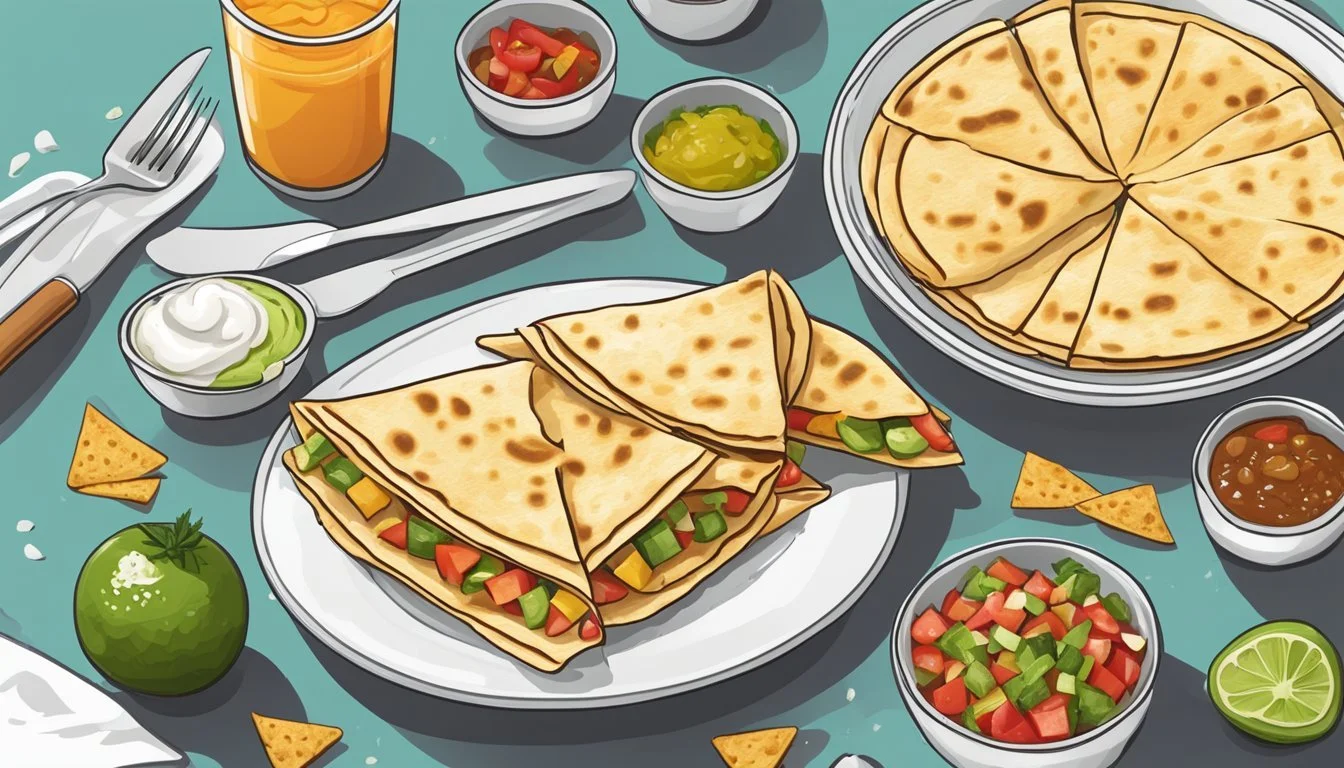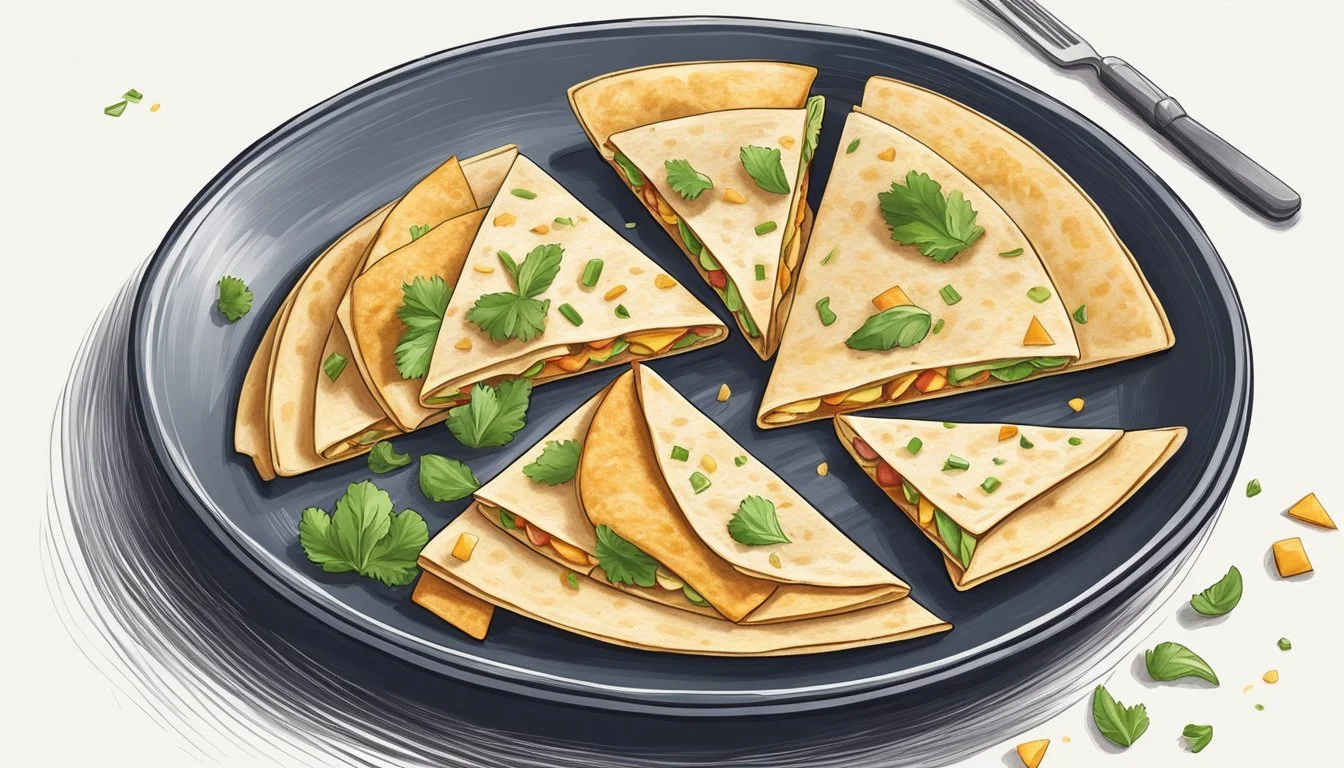How Do You Eat a Quesadilla?
Tips for Enjoying This Mexican Classic
A quesadilla is a versatile and beloved Mexican dish that has found a place in kitchens and menus across the globe. At its core, a quesadilla consists of a tortilla, most commonly flour-based, filled with cheese and then grilled or fried. The beauty of the dish lies in its simplicity, allowing for a wide range of fillings beyond cheese, including meats, vegetables, and beans. The variations are endless, and the quesadilla can cater to many tastes and dietary preferences, making it a staple for a quick snack, a hearty meal, or a shared appetizer.
Eating a quesadilla is often a casual and hands-on affair. Similar to enjoying a slice of pizza, quesadillas are typically cut into wedges or served as a half-fold that can be eaten with the hands. The melted cheese inside helps to bind the fillings, reducing the likelihood of spillage with each bite. If loaded with generous fillings or served with toppings like sour cream, guacamole, or salsa, utensils might be necessary to keep the experience tidy.
The quesadilla's adaptability extends not only to its fillings but also to the methods of preparation. For a crispy exterior and a warm, gooey center, the quesadilla may be cooked on a stove-top griddle or skillet, in an oven, or even a microwave for a quicker alternative. Each technique can affect the texture and taste of the final product, but the goal remains the same: a golden-brown tortilla encasing a perfectly melted mix of ingredients, ready to be savored.
Quesadilla Fundamentals
Eating a quesadilla involves more than just biting into a cheesy delight; it's about understanding the layers of texture and flavor that come together in this dish. From the base tortilla to the melting qualities of the cheese, every aspect contributes to the quesadilla experience.
Understanding the Tortilla
The tortilla acts as the foundation of a quesadilla. Corn tortillas bring a distinctive taste and are ideal for those seeking a traditional flavor or requiring a gluten-free option, as they're made from masa harina. On the other hand, flour tortillas are larger and more pliable, making them suitable for heavier fillings and for those who prefer the mild, soft texture that comes with wheat flour.
Selecting the Cheese
The cheese chosen must have good melting properties to achieve the quintessential gooey texture. Monterey Jack is a popular choice for its mild flavor and excellent meltability. Other great options are Oaxaca and Chihuahua cheese, which are traditional Mexican choices, or mozzarella, which can be a suitable substitute. Always go for shredded cheese as it melts more evenly.
Various Fillings
Quesadillas can be personalized with a plethora of fillings:
Proteins: Choose from chicken, beef, or pork.
Vegetables: Onions, peppers, and mushrooms offer a satisfying texture, while corn kernels and tomatoes add sweetness and freshness.
Legumes: Black beans are hearty and nutritious.
These combinations assure a balanced taste and add nutritional value.
The Importance of Fresh Ingredients
Fresh ingredients elevate a quesadilla from good to great. Include items like avocado, fresh cilantro, and cherry tomatoes to introduce brightness to your dish. When using raw vegetables like lettuce, opt for iceberg for its crispness. Fresh pico de gallo or guacamole can serve as flavorful accompaniments.
Seasoning and Spices
While cheese and fillings play starring roles, spices bring it all together. A touch of salt is fundamental, but additions like cumin, coriander, and a pinch of cayenne pepper can enhance the natural flavors of the fillings. For an authentic touch, incorporate epazote, a traditional Mexican herb, especially when working with black beans and corn.
Preparation Techniques
Preparing a quesadilla involves several methods to achieve the desired crispness and melt of the cheese. Each technique offers a different texture and flavor profile to the quintessential tortilla and cheese combination.
Using a Skillet or Griddle
Skillet or griddle cooking is a traditional approach for making quesadillas. It requires a frying pan, skillet, or griddle, preferably non-stick, heated over medium-high. The cook should lightly butter or brush olive oil on one side of the tortilla and place it oil-side down. Then they should sprinkle Monterey Jack cheese on half of the tortilla, fold it, and press it gently with a spatula. The tortilla should be flipped once the bottom side is crispy and the cheese begins to melt—usually after a couple of minutes.
Microwave Method
While not traditional, the microwave can be a quick alternative for melting the cheese inside a quesadilla. The tortilla is placed on a microwave-safe plate with cheese on one half. After folding, it's microwaved on high until the cheese melts, typically for one to two minutes. This method may not provide a crispy texture but is convenient for a quick meal.
Baking in the Oven
Baking in the oven allows for a more even heat distribution and can be ideal for cooking multiple quesadillas simultaneously. A preheated oven at a medium-high temperature and a baking sheet are required. Quesadillas are baked until the tortillas turn light golden brown, resulting in a uniform crispness.
Alternative Cooking Surfaces
For those seeking an authentic experience, a comal—a traditional Mexican flat griddle—is often used over direct heat. It can be substituted for a panini press or a waffle iron, which also provide a crispy exterior by heating both sides of the quesadilla at once, sealing in the ingredients efficiently.
Achieving the Perfect Fold and Wrap
Folding the quesadilla is crucial for even cooking and preventing filling spillage. The cheese and other ingredients should be distributed evenly before the tortilla is folded in half. If additional ingredients are used, they should not be so plentiful as to prevent the quesadilla from being securely wrapped.
Cutting Techniques
Once cooked, the quesadilla should be allowed to rest for a brief period to let the cheese set. It is then cut into wedges using a knife or a pizza cutter for clean slices. Some prefer to eat their quesadilla using fingers as utensils, enjoying the hands-on experience, while others may opt for traditional cutlery for tidiness.
Serving Suggestions
When it comes to enjoying a quesadilla, the serving suggestions can enhance the dining experience. The right accompaniments can bring additional textures and flavors, while the presentation style can elevate the meal from a simple snack to a satisfying meal, be it for breakfast, an appetizer, or a main course.
Accompaniments
A quesadilla can be served with a variety of side dishes and condiments that complement its flavors. Traditional Mexican quesadillas often include sides such as guacamole, pico de gallo, and sour cream. These add-ons provide a creamy or fresh counterbalance to the rich, melted cheese. For those seeking a nutritional boost, black beans or refried beans serve as a high-fiber and protein-rich side. A simple black bean salad with mango, cilantro, and lime juice can act as a refreshing side that competes with the quesadilla's hearty nature.
Guacamole - Rich in healthy fats
Pico de Gallo - Fresh and low calorie
Sour Cream - Adds creaminess
Black Beans - High in protein and fiber
Refried Beans - Satisfying and hearty
Presentation Styles
Presentation plays a crucial role in the enjoyment of a quesadilla. For a Mexican quesadilla, cutting it into wedges makes it easy for diners to enjoy as finger food. When serving a quesadilla as an appetizer, smaller bite-sized pieces may be more suitable. For a breakfast quesadilla, the presentation might be a full half or quarter of a quesadilla, to start the day with a satisfying option.
Appetizer - Bite-sized pieces
Snack - Wedges
Breakfast Quesadilla - Half or quarter size
Cutlery or Finger Food
The choice between using cutlery or eating with hands depends largely on the setting and the diner's preference. While it's often enjoyed as finger food due to its mess-free convenience, a fork and knife may be necessary for a loaded, messy quesadilla filled with generous amounts of cheese and fillings. A fork can also be useful for any accompanying beans or salads that are part of the meal.
Finger Food - Ideal for less messy options
Fork and Knife - Necessary for loaded, messy servings
Additional Considerations
When enjoying quesadillas, one should consider their health and dietary needs, the potential use of leftovers, and complementary food pairings to enrich the dining experience.
Health and Dietary Preferences
Nutrition Information: Each quesadilla varies in nutritional value depending on the ingredients used. For example, a quesadilla made with corn tortillas can be a gluten-free option for those with gluten sensitivities. Additionally, adding a healthy source of protein, such as chicken or beans, can increase the quesadilla's nutritional profile.
Special Diets: Individuals should be mindful of the cheese and any additives that may be present in store-bought tortillas or fillings, particularly if they have dietary restrictions or are watching their caloric intake.
Utilizing Leftovers
Quesadillas and Leftovers: Leftovers can easily be transformed into a delicious quesadilla filling. Not only does this approach reduce food waste, but it also provides an opportunity to enjoy a variety of flavors in every bite.
For instance:
Leftover roasted vegetables can add flavor and nutrition.
Shredded meat from previous meals can enhance the protein content.
Food Pairings
Sides: Quesadillas are often served with a side of rice and beans, which complement the flavors and contribute to the meal's overall balance of macronutrients.
Classic pairings include:
Spanish rice or cilantro-lime rice
Black beans or pinto beans
Complement your quesadilla with sides that contribute to both the taste and nutrition of your meal.
Cultural Significance
Quesadillas hold a prestigious place in Mexican cuisine, reflecting the nation's cultural identity and culinary history. They are not just food but an emblem of tradition across diverse regions.
Traditional Recipes and Variations
In Mexican culture, quesadillas are a staple made by filling a softened tortilla with cheese and other ingredients before folding and cooking. Oaxaca cheese, with its stringy texture, is commonly used in traditional quesadillas, imparting a unique taste and authenticity. However, variations exist, such as using Chihuahua cheese for a different flavor profile. Some regions incorporate meats like chorizo or servings of potatoes and beans, demonstrating the versatility and regional adaptability of the dish.
Regional Ingredients and Flavors
Each region in Mexico brings its local flavor to quesadillas, using ingredients that are readily available or grown locally. Northern Mexico favors Monterey Jack cheese, while the Southern regions might favor Oaxaca cheese for its meltability and distinguishing taste. Furthermore, in certain locales, one can find quesadillas with corn or flor de calabaza (squash blossoms), exemplifying the rich diversity of local ingredients.
Quesadilla's Place in Mexican Cuisine
Within the realm of Mexican cuisine, the quesadilla acts as both a daily comfort food and a festive entity. It is a common sight on street food stands and home kitchens alike. Quesadillas not only serve as a quick eat but also play a role in social gatherings and family meals. The gringa, a variation with cheese and meat typically served on a flour tortilla, highlights the quesadilla's adaptability to taste preferences while reinforcing its foundation in Mexican culinary practices.





